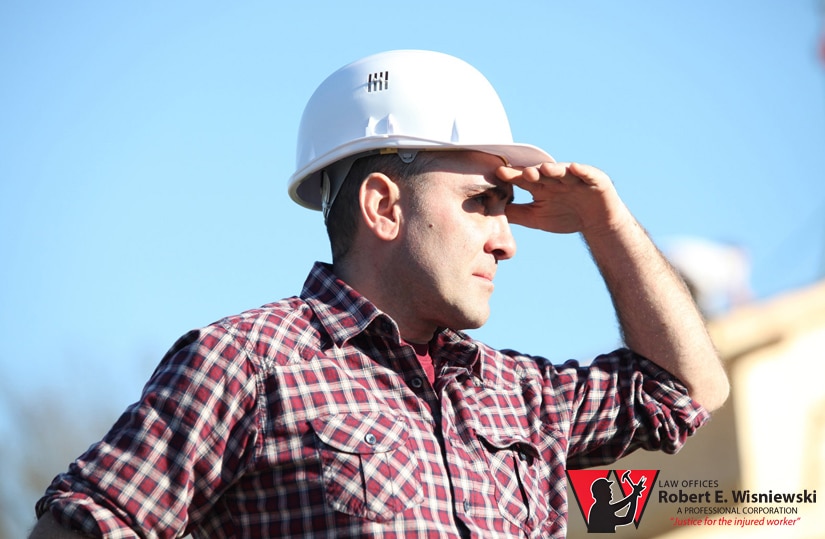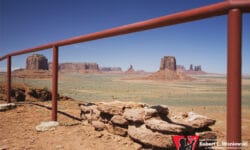How outdoor workers in Arizona can protect themselves in severe weather
No matter the season, it’s important for people who work outside to be mindful of some basic safety tips in the workplace. During hot summer months in Arizona, heatstroke and heat exhaustion can be a major problem, while the dropping temperatures of winter pose their own set of risks.
If you’ve suffered an injury or illness due to extreme weather, you may be entitled to workers’ compensation. Reach out to the Law Offices of Robert E. Wisniewski today to get started on your case.
Common work-related heat illnesses
Arizona’s desert climate is prone to extreme weather and temperatures. During the summer, some areas of the state are exposed to more than 120 days of extreme heat over 100°F.
Heatstroke
Arizona heatstroke is a serious concern for anyone who works outside in our state. It’s a medical emergency that occurs when your body is unable to cool itself down, leading to a rapid rise in core body temperature that can damage your organs, brain, and muscles and, if left untreated, can be fatal.
Symptoms can include a rapid pulse, red or hot skin, confusion, slurred speech, and fainting.
Heat cramps
The sweat that comes out of your body has a high salt concentration. Since salt is needed by many of your vital organs and muscle systems, a quick loss of salt in the body can result in excruciating cramps. Heat cramps present as painful spasms that typically occur in the abdomen, arms or legs.
Heat exhaustion
Heat exhaustion is usually the body’s response to dehydration. One of the most important things to remember when working in extreme heat is to replace as much of the fluid that your body loses through perspiration as possible.
Typically, heat exhaustion presents with many of the same symptoms that are associated with heatstroke, though slurred speech and confusion are not usually involved.
Heat rash
While heat rash may be considered the least dangerous, it’s often the earliest warning sign that you may be suffering from heat-related issues. Usually a cluster of red pimples or blisters, heat rash appears most commonly in the bends of your arms, neck, upper chest and groin areas.
Heat rash may not result in serious injury or death, but it often proceeds heat exhaustion and heatstroke. Being mindful of your symptoms is important.
Hot weather work safety tips
Anyone who spends time working in hot weather should remember to take the following precautions:
- Stay hydrated. Regular water breaks are crucial. Also, be sure to drink water or sports drinks packed with electrolytes. Avoid coffee, carbonated colas and alcohol as these beverages can actually speed up the dehydration process.
- Dress accordingly. Light-colored, lightweight, baggy clothing can help prevent heat illnesses.
- Take frequent breaks in the shade. Employers should be mindful of the temperatures and the dangers of the sun on their employees. Shaded breaks should be provided so the employees have an opportunity to cool down.
Are there any Arizona heat laws to protect workers?
Yes, on March 26, 2024, Phoenix, Arizona, enacted a significant new ordinance aimed at protecting outdoor workers from the severe heat that characterizes the region.
Passed unanimously by the city council, this rule mandates that city contractors and their subcontractors provide their outdoor workers—including those in construction and airport operations—with essential protections against heat. These protections include guaranteed access to rest periods, shade, free drinking water, and air conditioning.
The ordinance also encompasses training for workers to recognize the signs of heat stress. Notably, the rule will extend air conditioning to vehicle compartments by May 2025 and is expected to benefit an estimated 10,000 workers under city contracts.
Can I sue my employer for heat exhaustion in Arizona?
Generally, workplace injuries or illnesses, including heat exhaustion, are covered under worker’s compensation, which can provide medical benefits and wage replacement related to the injury or illness. This system typically prohibits you from suing your employer in civil court for damages related to the injury or illness itself if you accept workers’ comp benefits.
However, if the situation involves egregious violations of safety regulations or if worker’s compensation does not apply, you might consider a personal injury lawsuit based on negligence. For this, you would need to prove that your employer failed to take reasonable care to prevent heat-related illnesses and that this failure directly caused your heat exhaustion.
If you believe your employer has violated Arizona’s heat safety regulations and you’ve suffered as a result, it would be wise to consult with a local Phoenix work injury lawyer who can help you explore your legal options and ensure your rights are protected.
Common cold-weather injuries on the job
Is Arizona always hot?
The answer to that question is no, which may come as a surprise to those who don’t live here. Many people mistakenly assume that Arizona temperatures remain near triple digits year-round. However, wintertime in parts of Arizona can produce temperatures that are so frigid that they become dangerously cold for outdoor workers.
The Arizona Department of Health Services reported that over 3,000 people visited Arizona emergency departments over cold-related issues from 2010-2018. Over 430 people died due to cold-weather exposure. (source)
Trench foot
Trench foot is the result of feet that have been submerged in water for an extended period of time while also being exposed to cold temperatures. Shockingly, trench foot can occur in temperatures as high as 60 degrees Fahrenheit.
Trench foot poses a risk for serious injury because wet feet lose heat 25 times faster than dry feet do. The body’s natural response to this quick loss of heat is to constrict the blood vessels in the feet. Lack of blood flow produces the death of tissue as toxins build up.
Trench foot can be identified by a host of symptoms, but the most common are redness, tingling and severe cramps in the feet and legs.
Hypothermia
Hypothermia can be life-threatening if the exposure to cold temperatures goes on for an extended period of time. The early symptoms of hypothermia are typically fatigue, disorientation, shivering and a loss of coordination. If hypothermia persists, it can progress to blue skin, a lack of shivering (despite the cold), slowed pulse, dilated pupils and eventually a loss of consciousness.
Chilblains
Much like trench foot, chilblains can occur in temperatures up to 60 degrees Fahrenheit. Typically occurring on fingers, toes, ears and cheeks, chilblains is redness and irritation of the skin that results in permanent damage. This damage can worsen if exposure is continued.
Cold weather safety tips for Arizona workers
Much like warm weather, there are some basic cold weather safety tips that outdoor workers and employers should follow:
- Dress warmly. Wearing proper clothing, boots, gloves and ear protection is vital.
- Pack extra clothes. Be sure to have extra clothes on the job site in case primary clothing gets wet.
- Stay alert. Take the time to be aware of your current physical symptoms and those of your coworkers.
Any injury, whether caused by heat or cold and results in the need for medical attention, could be a reason to file a workers’ compensation claim.
Arizona’s workers’ compensation statute of limitations requires an injured worker to report his or her work-related injury within 1 year from the date of injury.
If the worker doesn’t file a claim before the 1 year deadline, he or she may forfeit their right to receive compensation.
Does workers’ compensation cover weather-related injuries and illnesses?
Under Arizona workers’ compensation laws, an employee must be able to prove that there is a connection between the illness and the work activities, and the origin must be associated with a work-related risk.
Additionally, the occupational disease must not have been caused by external factors unrelated to work activities, which also means that the worker must not have been exposed to the same work hazard outside of work. Employees must be able to provide evidence in support of these qualifications.
How to file a workers’ comp claim in Arizona
Below are the steps to follow to file a claim for heat exhaustion workers’ compensation or any other work-related injury or illness in Arizona:
Step 1: Seeking medical attention should be your first priority. This is a crucial step, as it helps tie your injury or illness directly to your job, which will be necessary for a successful claim.
Step 2: After treatment, you should report the details of your workplace injury, in writing, to your supervisor to begin the claim process.
Step 3: Soon after sustaining a workplace injury, you should write down details about the accident while they are fresh in your mind. At a minimum, your record of the event should include the following elements:
- Exact date and time of the injury
- Your exact location at the time of the injury/accident
- All body parts injured
- A brief statement of the events surrounding the injury (How did this happen?)
Step 4: File the “Workers Report of Injury” form with the Industrial Commission of Arizona.
Benefits from a workers’ compensation claim are limited; however, you can usually expect your employer’s insurance company to pay 100 percent of your medical bills. You will also receive a percentage of your lost wages to compensate for time off work.




